The post “I’ll do whatever it takes – just don’t let them take our kids away.” appeared first on Hope and Homes for Children.
]]>“If the children are not enrolled in school and if your living conditions don’t improve, we have no other option but to put all children in a local placement centre,” said the representative from the Child Protection Department (CPD) upon meeting the Mihaescu family.
These are the words that rocked Ion* and Cristina’s* life. Loving parents of five children, they found out they were at risk of having each of their children taken away from them and placed in an orphanage.
Like millions of parents around the world – parents who are struggling, parents who need support – Ion and Cristina were faced with an unthinkable situation. Losing their children. Until people like you helped bring them bring strength back to family. This is their story.

Alexandra Smart / Hope and Homes for Children
How we help keep families together
Our team in Romania discovered the Mihaescu’s situation back in 2021.
Andreea, our social worker, remembers what it was like hearing the announcement from the authorities that the children would be taken away.
“It was a clear warning. I was there, I heard it first-hand. It made my heart skip a beat. Almost reflex-like, I covered Federica’s* ears when he said it. I knew the family’s situation needed rapid improvement.”

Alexandra Smart / Hope and Homes for Children
At the time, all five children and both parents were living in just one nine-square-meter room. Somehow, two tattered beds and a small table managed to fit in.
Ion used to work in construction as a day labourer, but, after lockdown and with construction sites being on and off, he couldn’t find work.
Cristina was taking care of the children. She used to work for a dry cleaner, but was now at home nursing baby Gabriela*, with minimum pay. Her low salary and the children’s social benefits – that’s all there was. And that was supposed to be enough for baby food, diapers, meds, food for the entire family, and clothes. It simply wasn’t.
The Mihăescus were living without electricity or access to any other utilities: no heat, no gas. They got water from a nearby well.
Stepping in to help
Thanks to your donations, Andreea was able to make a plan. She knew Ion and Cristina were great parents. They just needed help.
“I had to propose a plan to the Child Protection Department,” Andrea explains. “We’ll help with improving the living conditions and with enrolling the kids in school. ‘Will that work as a rapid intervention?’, I asked. Luckily, they were on board.”
The CPD and the local City Hall helped with enrolling all the children in school. Only Federica had ever gone to school, but she had dropped out. She wanted to go back. “What would I wear? I don’t have any shoes,” she said.
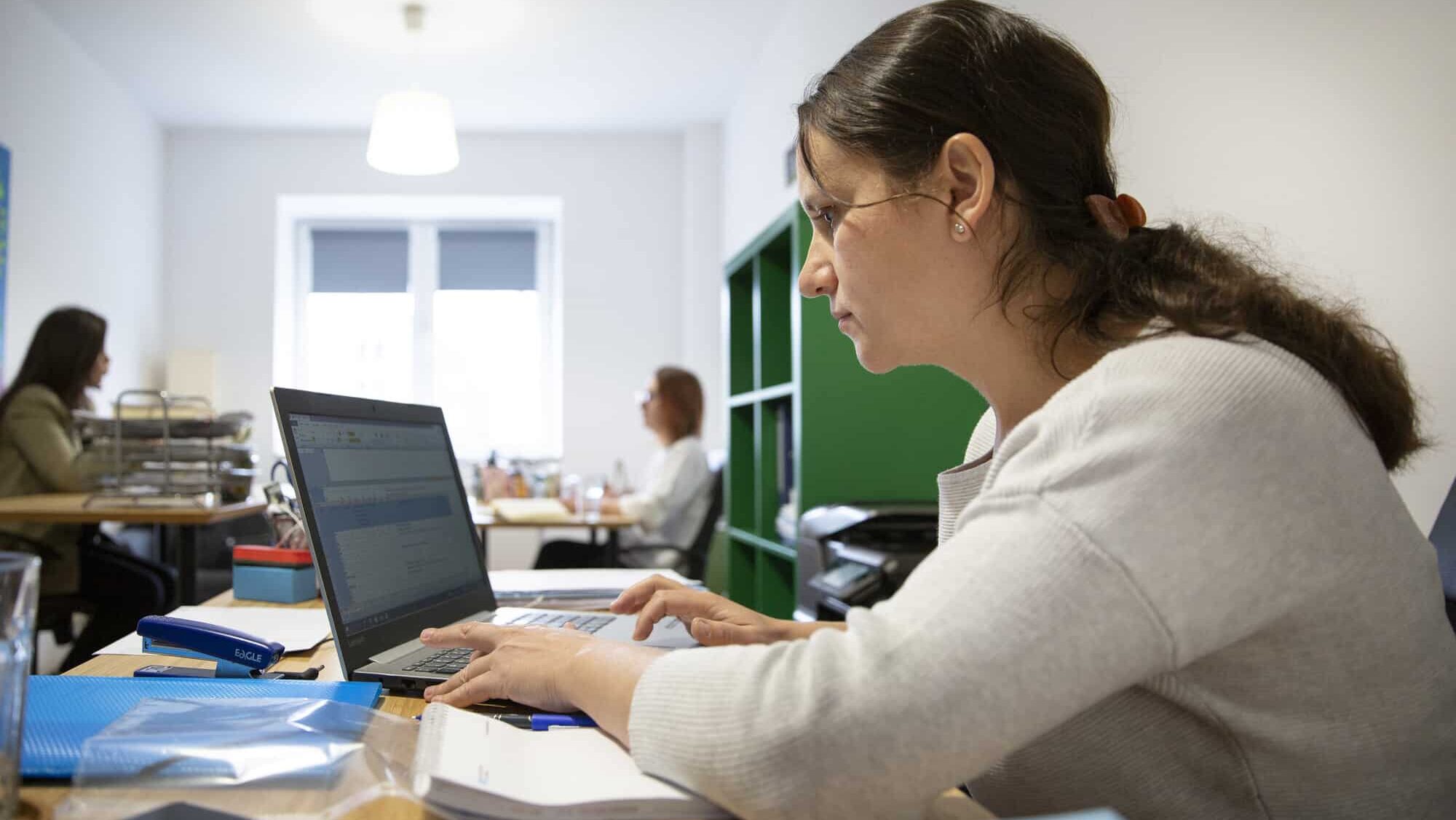
Alexandra Smart / Hope and Homes for Children
Our team started by getting the family basic staples: food, clothing, and hygiene items. With no electricity there was no fridge, so we focused on canned items, flour, oil, and cornflower. And then shoes and clothing for the kids.
We then focused on bringing electricity in. It took two months, but the family has electricity now. We bought a fridge, a washing machine, and a wood-burning stove. For the first time, there was heat inside the home.
“Ion did everything. He was a brick mason, a carpenter, a roofer, a concrete finisher, depending on what was needed,” says Andreea. He kept repeating, “Ma’am, I’ll do whatever it takes, just don’t let them take our kids away.”
“Ma’am, I’ll do whatever it takes, just don’t let them take our kids away.”
Ion
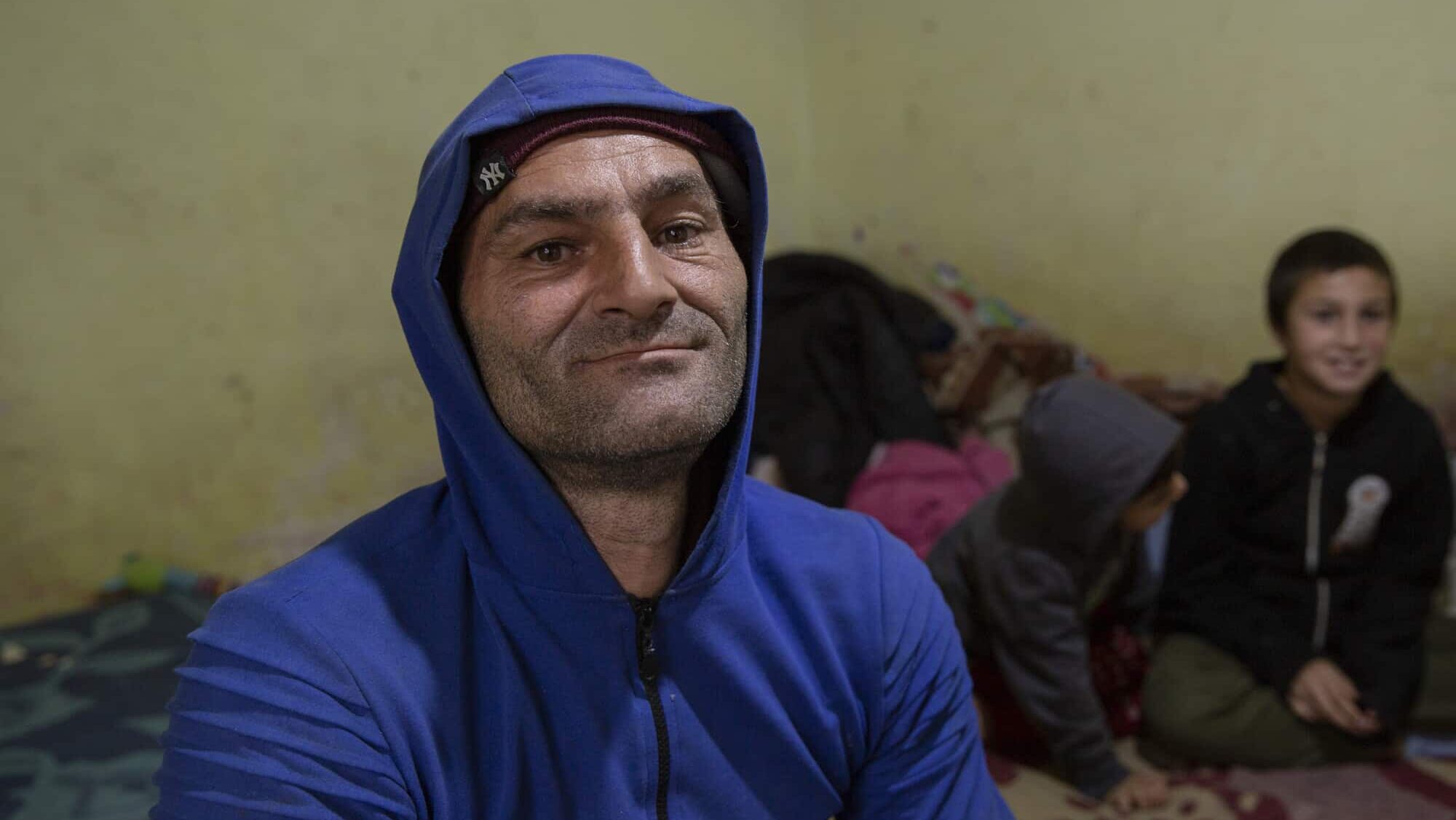
Alexandra Smart / Hope and Homes for Children
Together, at last
Thanks to your donations and the tireless work of our team, everything’s different for the Mihaescu’s now.
Their house is warm, safe and comfortable. Ion’s out working every day. Gabriel*, the oldest son, works alongside Ion on weekends, helping his dad support the family. Cristina will return to her job when Gina* turns two. But for now, she’s enjoying being together, at home, with her babies.
“We wouldn’t have made it without you. God bless you. I would never let go of my children.”
Cristina
Looking to the future, we want to ensure the children stay in school. They still need our support, especially around those moments when any family spends a bit more than usual. When schools started, for example, we helped with supplies, notebooks, pens, and backpacks. But no matter what, we want to stay by their side to make sure this family stays united.
As they deserve to.

Alexandra Smart / Hope and Homes for Children
If you’d like to hear more inspiring stories about families being helped to stay together, as well as more heartwarming examples of the impact of your donations, sign up to our Mailing List. We’ll keep you up-to-date as we bring strength and stability #BackToFamily.
Join the Mailing List
* Names changed to protect identity.
Support our work Always families, never orphanages
Every child deserves the chance to grow up in a loving, stable family.
The post “I’ll do whatever it takes – just don’t let them take our kids away.” appeared first on Hope and Homes for Children.
]]>The post “It was the happiest day of my life, when I took my boy back” – Ivan* and Stoyan’s* story appeared first on Hope and Homes for Children.
]]>Stoyan* will never forget the night Ivan*, his three-year-old son, was taken from him.
“A policeman came to the door and entered my home without asking and just took him. No warning, no support”, he remembers. “It was terrible.”
Ivan had cerebral palsy, and the authorities decided Stoyan, a single dad on low income, wasn’t fit to care for him. As a result, Ivan spent two years inside an orphanage. Lonely. Afraid. Until people like you brought him safely back to family.

Hope and Homes for Children
The pain of separation
Overnight, Stoyan’s life changed forever. After his wife left, he’d worked night and day to care for their son. But now, everything was ripped away.
“It was horrible”, Stoyan remembers. “I’m a labourer and I was working 12 to 15 hours a day because I couldn’t sleep. My friend told me, ‘If you carry on like this, you’ll kill yourself.’ I was waking up in the night and crying because Ivan wasn’t with me.”
“I was waking up in the night and crying because Ivan wasn’t with me.”
Sadly, Ivan was suffering too.
Inside the orphanage
Ivan spent the next two years heavily medicated. Confined to a cot in a darkened room on the top floor of the orphanage, he’d wait for his dad to visit.
“The institution would allow me to visit only once a week for 15 minutes, between 1030 and 1130 when Ivan was tired and hungry”, Stoyan remembers. And worse, every time he came, he saw his boy’s condition getting worse.
“How was the care? Total zero care,” he recalls. “They tied him into a wheelchair. Before then, Ivan was beginning to stand and walk with support and he had started to speak. He could say mummy and daddy.”
“They tied him to a wheelchair.”
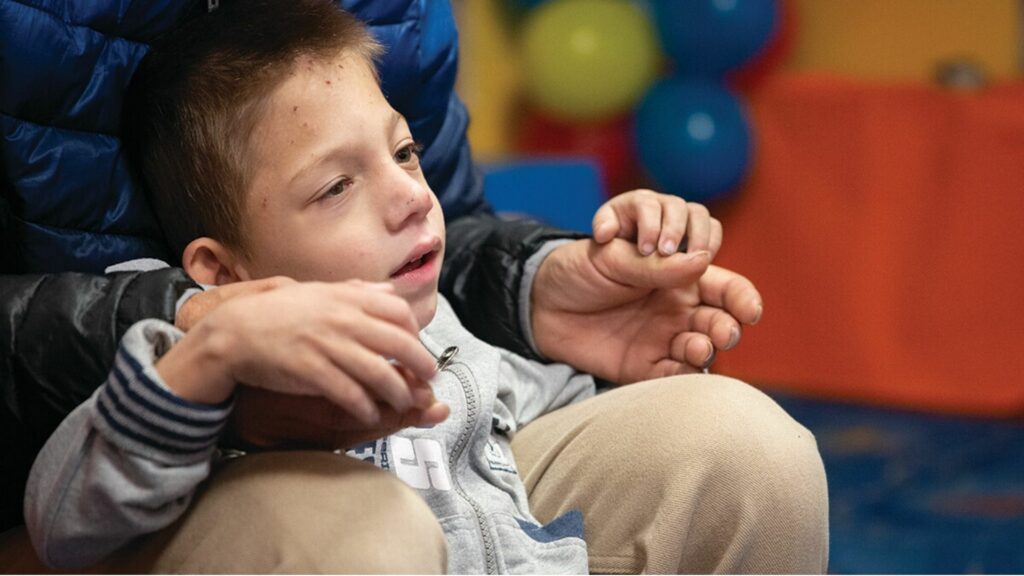
Hope and Homes for Children
For two years, Stoyan fought a lonely battle against red-tape, prejudice and indifference. The odds were stacked against him.
“First, if I take my boy home, the institution loses income”, he explains. “Then, even when I went to court and won full custody of my son, the institution just ignored it.”
Ivan was stuck.
Family first
Ivan’s experience is all too common. Around the world, 80% of the 5.4 million children in orphanages have living parents. And one in three children in orphanages have disabilities.
One in three children in orphanages have disabilities.
European Disability Forum
The one-size-fits-all model of institutional care doesn’t help children. It harms them. Above all, children need love, care and personal attention. Something even the “best” orphanages can’t provide.
Stoyan knew he had to get his boy home. And thanks to your generosity, he found the help he needed.
The fight begins for Stoyan
Since 2011, our team in Bulgaria has been working to close orphanages and bring children living inside back to family. Children like Ivan.
Elitsa Ivanova, one of our support workers, discovered Ivan’s case, and immediately started working to help Stoyan.

“The local child protection department lied to him,” Elitsa remembers. “They kept setting him tasks and challenges but when he met them, each time the authorities let him down again. Because he is a man on his own, people could not see him as the parent for a child with a disability.”
“Because he is a man on his own, people could not see him as the parent for a child with a disability.
Elitsa knew that Stoyan was a loving father. She knew all he needed was some help. And thanks to your support, that’s what he finally received. Help.
Helping Stoyan change the tide
Your donations helped Stoyan convince the authorities he was the best option for Ivan. They helped him find a better place to live, as well as all the essentials he needed to support Ivan and his disabilities.
With your help, and Elitsa’s team by his side, Stoyan brought Ivan back to family.
“It was the happiest day of my life, when I took my boy back,” Stoyan remembers. “Now, we like to do everything together. He is very affectionate, he hugs and kisses me. He likes my stubbly chin so I don’t shave for him!”
Read more about how your donations help parents bring their children back to family.

Hope and Homes for Children
Looking to the future
Today, Ivan’s doing much better. Stoyan says he has seen a rapid improvement since Ivan stopped taking the drugs that were prescribed by the institution. Now, he can stand and walk by himself, and is slowly learning to speak again.
When we asked Stoyan about the challenges he faces, he told us simply, “There are no challenges now. I just love my boy and I am not interested in anything else.”
“There are no challenges now. I just love my boy and I am not interested in anything else.”

Hope and Homes for Children
Thank you
Thanks to your continued support, our team was able to support more children like Ivan – standing up for their right to a loving, family home. Today, the orphanage has been shut down. And that’s all thanks to your help.
Want to hear more incredible stories about the impact of your donations? Sign up to our Mailing List and receive more heartwarming and inspiring examples of children finding their way back to family.
Join the Mailing List
SUPPORT OUR WORK We need your help
Your donation will help us bring more children like Ivan back to family.
The post “It was the happiest day of my life, when I took my boy back” – Ivan* and Stoyan’s* story appeared first on Hope and Homes for Children.
]]>The post Helping children living with the consequences of deafness appeared first on Hope and Homes for Children.
]]>Children living with deafness and hearing impairment are 4 times more likely to suffer abuse than hearing children. One of the main reasons children living with deafness are so at risk, is that their specific communication needs are not addressed, especially sign language. This ultimately denies them access to education. It prevents them from being able to disclose harm and abuse. And it also means the ways in which they can maximise their own safety are not adequately communicated to them. This makes deafness a language problem, a communication challenge, rather than a disability. And society is not nearly enough concerned about it.
Redefining what it means to ‘listen’
Here in India, where I’m visiting some of our programmes, Ishaan*, 12, has very strong opinions on this.
“Everyone should learn how to sign …. it’s not my problem if they can’t, it’s their responsibility.”
I’ve just spent the day with Ishaan and some of his remarkable friends. They are all pushing back and demanding that society changes and adapts to include them, rather than them having to fight for their rights to protection, and their rights be able to participate in decisions which affect them. Because they are the experts on their own childhoods.
Over 1 million children at risk in West Bengal
Children living with the consequences of deafness are often not diagnosed until much later in their life, and so remain excluded and suffer the cruelty of stigma. The likelihood of being trafficked into the sex industry if you’re a girl, or into labour if you’re a boy, are much higher if you are deaf. Too often, the solution becomes part of the problem. If your parents have limited education and limited means, then the chances are high that you might be separated from them and taken into an orphanage.
And there, the process of institutionalisation will likely lead to further abuse, certainly neglect, and inflict lifelong consequences.
In fact, the traffickers are actively infiltrating orphanages, coercing children into them, then asking those children to send photos of friends. The traffickers use those photos to select and target other children, getting the children they’ve placed in the orphanages to persuade the targets to run away, into grievous exploitation.

There are only 200 certified India Sign language (ISL) interpreters registered here in West Bengal – a State that has a population of over 100 million people. Of that 100 million, approximately 2 million are deaf or hearing impaired, and more than half of them are children like Ishaan.
Working towards a better future
But it doesn’t have to be this way. Hope and Homes for Children has been working with our wonderful partner organisation, Children In Need Institute (CINI), since 2016. CINI has its own interpreters, offering frontline health and education services.
The World Health Organisation estimates that 60% of deafness is preventable. So if CINI can, through their health programmes,
- get on top of diseases like meningitis, which are key causes of deafness among children,
- and nail early diagnosis so that early interventions can mitigate the risks associated with deafness in early childhood,
then we could massively reduce the scale of the need.
And imagine if, through their education programmes, we could build the infrastructure and capability to make ISL as much a local language – used in homes and schools – just as Hindi or Bengali are. Hundreds of thousands of children would never know the trauma of being separated from their families and institutionalised or trafficked.
Realising every child’s potential
Because here’s the sweet spot: children living with the consequences of deafness can achieve the same educational outcomes as hearing children, if they have the right support. That means they can go on to college or university. It means they are more likely to find employment, and it certainly boosts their earning potential. It shifts the dial from dependency, isolation and exclusion, toward inclusion, socialisation and self-determination. These children will be happier and more productive, and the system would be less costly in the long run. Again, the World Health Organisation is clear:
- An annual additional investment of less than US$ 1.40 per person is needed to scale up ear and hearing care services globally.
- Over a 10-year period, this promises a return of nearly US$ 16 for every US dollar invested.1
Children living with deafness should be enabled to communicate in their language of choice. Everyone benefits. This really is our responsibility. Not theirs. So if you can, please do donate to support the work of CINI and Hope and Homes for Children. You would be helping to transform the lives and futures of many, many children.
[1] https://www.who.int/news-room/fact-sheets/detail/deafness-and-hearing-loss
*Names changed to protect identity
The post Helping children living with the consequences of deafness appeared first on Hope and Homes for Children.
]]>The post Why child development hinges on love and hope appeared first on Hope and Homes for Children.
]]>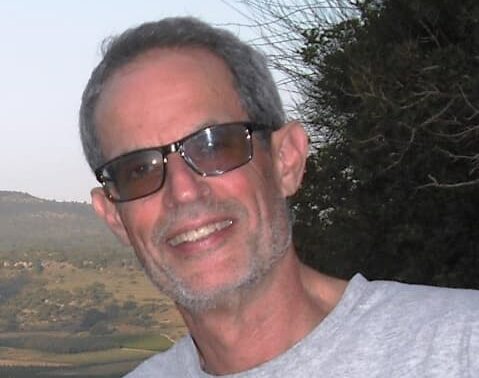
Hope and Homes for Children’s Amelia Whyman caught up with Barry to find out more about his research.
Amelia Whyman (AW): Barry, having studied child development for decades, you’re a convert to children’s emotional wellbeing as a key factor in their overall health and development. Can you tell us how that came about?
Prof Barry Bogin (BB): Well, I never really thought about the emotional side of things until quite recently. I was mostly convinced by the other ‘big shots’ of the day, that children’s development was [about] nutrition or infection.
Those are the first two things the World Health Organisation lists as affecting kids’ growth. The third thing is inadequate care. So essentially, they’re putting the blame on mothers or whoever’s taking care of the kids.
There’s nothing wrong with those things! Of course kids need food. And of course kids need good health. And of course kids need good care from other people.
But, the World Health Organisation says nothing about society. It’s all ‘the family’. 90% of all interventions that I’ve been involved with focus on a mother and her baby. And we don’t think about society at large.
Why are these people poor to begin with? Why are they marginalized to begin with? Why are they suffering? Why are they stressed out 24 hours a day, 7 days a week? We don’t think about that. We just say, ‘if we sprinkle some nutrients on their food, or we give them a flush toilet, let’s see if that makes the kids healthier’.
Well, it doesn’t.
Good nutrition alone is not enough
That realisation came from analysis I did, with others, of nutritional interventions in low-income urban areas around the world; we found these nutritional interventions either have no effect, or their effect is smaller than possible measurement errors, or they actually had negative effect.
In other words, the kids who got the intervention at the end were shorter than the kids who didn’t get that. These are under 5s.
So several popular reviews have found that nutritional interventions or sanitation interventions have no effect on improving growth.
And that got me to say, well, what does?
Upstream factors
At that time, some other people were already talking about ‘upstream factors’ – the social, political and economic system of the society.
And I already knew this. It was not a surprise, but I had never put two and two together. So, around eight years ago, finally, I did put two and two together.
I said, yes, it’s, it’s these upstream factors. It’s the love of the society. If a society doesn’t love its people, those people suffer. If the society is selfish and hoards resources for the few who are in power, and then if there’s violence on top of it, then the marginalized just suffer.
The chronic stress of suffering
As we know now, they suffer because they have chronic physiological stress and that stress produces hormones. We all get short term stress hormones, for example crossing the street in front of a bus, or if you’ve got a big exam next week. It’s good to have a stress response at that time; it will get your heart rate and blood pressure up, it diverts calories from elsewhere in your body to fighting or fleeing. That’s fight or flight syndrome.
But, when you have chronic stress 24/7, when you’ve been exposed to stress before you were even born, because your mother’s been suffering chronic stress for decades, that blocks your own physical growth, brain development, cognitive development, your school performance – everything. Those stress hormones are antagonistic to growth hormones. The relationship is very clear.
Stunted growth
And not only do stress hormones block growth of the skeleton, they promote the storage of any extra calories as fat. And that’s what we see around the world today. In middle- and low-income countries, our kids suffer a very high prevalence of what’s called stunting. That’s a very short height for age.
Kids in orphanages, many of them are stunted because they just stop growing. As soon as they get out of the orphanage, one of the first things that social workers know is you’ve got to find new clothes, because they grow.
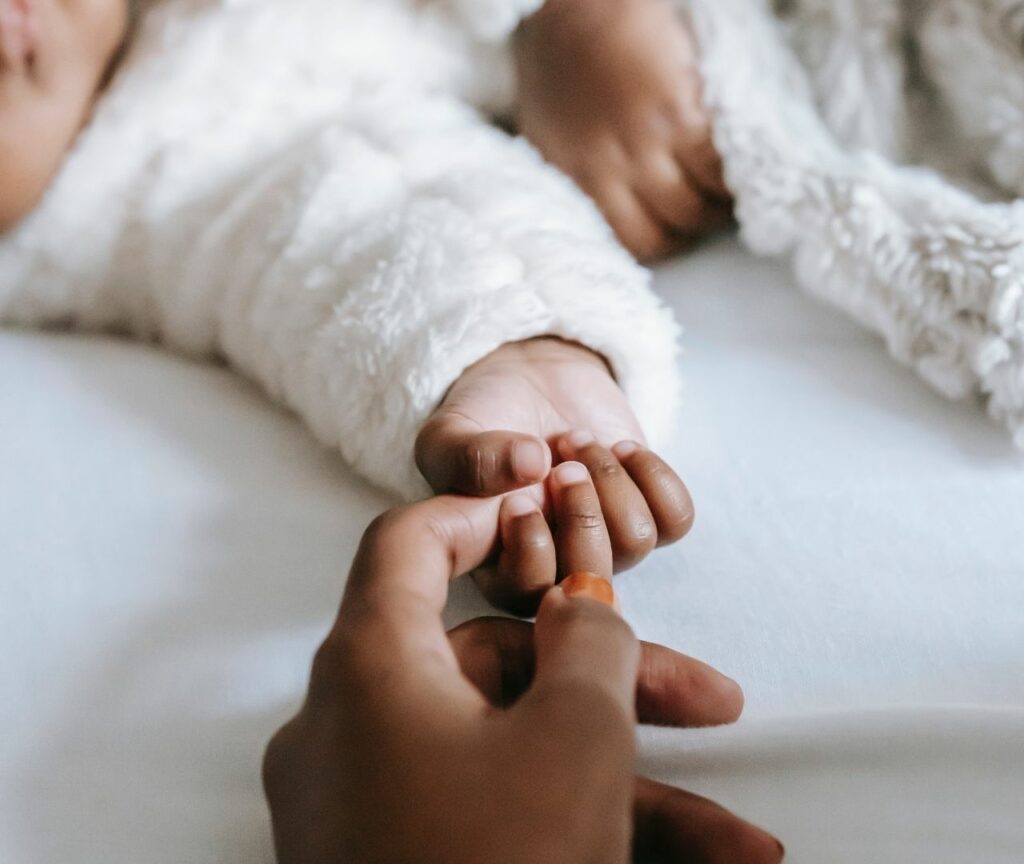
(AW). This is fascinating. From your own years of work, typically how long would you say it can take a child to recover, when love and hope are reintroduced into their life?
In kids under five, and maybe even up to nine or so, the effect is almost immediate; a month, perhaps six weeks.
So the power of love works very quick.
I worked in Guatemala for many years studying the growth of Maya (people native to Central America) school kids. Later on, I measured Maya boys and girls who were in the United States. I measured the kids in primary school, children between the ages of five and 12. And in 1992, I found that they were about 7cm taller than children the same age back in Guatemala, including their own brothers and sisters. In 2000 I remeasured a different group – same places, same schools – and they were 11cm taller. And not only were they 11cm taller, which is just amazing, they were taller than their own brothers and sisters who had been born or spent their early lives in Guatemala. So it wasn’t genetic. It was clearly something about life in the United States.
Now these families were still poor. Many of the parents were still undocumented. But most of the kids by 2000 had been born in the U.S. The law in the U.S. is if you’re born in the U.S., you’re a citizen. That’s it. So these kids were entitled to services that citizens get; breakfast and lunch at schools, and some health care. And of course, that helped nutrition and health status. But that explains maybe two, three, four centimetres.
So let’s say half of it is due to nutrition and healthcare. The other half is due to the lack of this chronic, toxic stress in their lives.
They weren’t afraid, their parents weren’t afraid, the mothers weren’t as afraid when they were pregnant. They could walk down the street, and they were just kids; they weren’t the target of a civil war. They weren’t the target of Guatemalan government genocide campaigns.
Stress takes a toll on everyone in society
But fear is still a problem for everybody in the country. That’s what I pointed out in another article I did before Love and Hope – Fear, Violence, and Stunting in Guatemala.
The children of the richest people in Guatemala have a stunting rate of 17%. It should be less than 2%. In a normal situation, some kids have to be short, some kids have to be tall – that’s just the way height is distributed – with a bell-shaped curve of heights, where most people are in the middle.
In other countries like Pakistan and India the richest families have over 20% stunting in under five-year-olds. That’s a sign that you can’t get away from it. If the society is corrupt and violent and mistreats the lowest 20% of the population, that also affects the wealthiest.
Because the wealthiest have to live in that country too.
Little kids in orphanages live with that kind of fear too. Maybe they’re not going to be kidnapped (like in Guatemala), but they can be physically abused, sexually abused.
————————
In the second part of our interview, Professor Bogin discusses how with the loss of our own orphanages, many higher income countries have forgotten the importance of one to one care for children’s development, and his own hopes for an end to orphanage use worldwide.
The post Why child development hinges on love and hope appeared first on Hope and Homes for Children.
]]>The post “They said how could you possibly want to keep black children?” appeared first on Hope and Homes for Children.
]]>By providing the practical and emotional support their parents needed, Hope and Homes for Children in Bulgaria made it possible for Kaloyan and Maria to be reunited with their family and grow-up where they belong; with the people who love them.
Four year-old twins Kaloyan are very much the centre of attention in the warm and happy home they share with their mum, Tanya, their stepdad Ivan and their older brother and sisters in a village in the North West of Bulgaria.
But the twins spent the first five months of their lives separated from their family in an orphanage after ill-health threatened to tear their family apart. Tanya became pregnant with the twins when she was working abroad to earn money for the family. Ivan agreed to stand by his wife, even though the babies were not his, and Kaloyan and Maria were born soon after Tanya returned home. It was a traumatic birth that ended in an emergency caesarean section and left Tanya suffering from post-natal depression. At the same time, Ivan was admitted to hospital to receive treatment for a heart condition.
Tanya felt completely alone. “I listened to the nurses in the hospital who behaved very badly. They said, “How can you even want to look at your black children? Better you give them up, right?”, she remembers.
Tanya felt completely alone. “I listened to the nurses in the hospital who behaved very badly.”
With no one to support her, Tanya felt she had no choice and made the heart-breaking decision to leave Kaloyan and Maria in an orphanage.
“I cried constantly when I signed to give them up because I grew up without a mother or a father. They left me very young, in a home and I just didn’t want my children to be the way I was.”
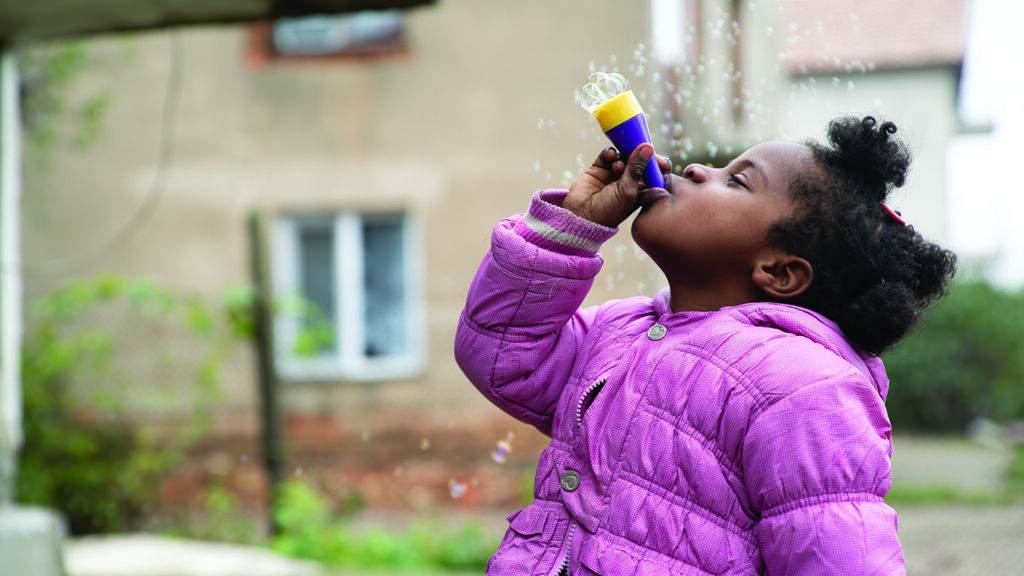
She returned home to Ivan and their older children but could not come to terms with losing the twins.
“I neither ate nor slept peacefully, just wondering how my kids were. How are they in this orphanage without me?”, she explains. Tanya was desperate to find a way to be reunited with her babies. And Ivan decided to support her decision. Even though everyone in their small rural community would know they were not his biological children, even though he was well aware of the prejudice they would face, he was determined to make their family whole again.
“I neither ate nor slept peacefully, just wondering how my kids were. How are they in this orphanage without me?”
It has been tough fight to overcome all the practical, bureaucratic and legal hurdles that have stood in their way—both to bring the twins home and to care for them ever since but our team in Bulgaria has been beside them all the way.
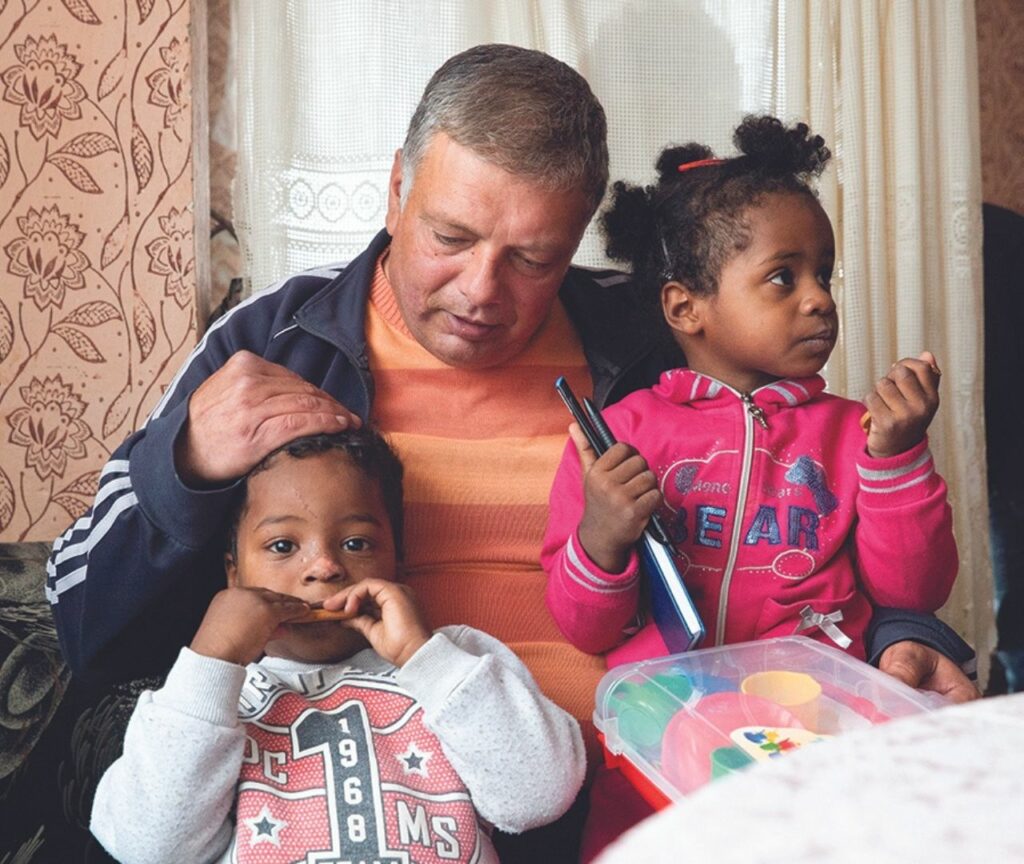
Social worker, Margarita Andreevksa, co-ordinates support for children in families in the area where they live. She ensured that Kaloyan and Maria’s family had all the practical and emotional support they needed to bring the twins home and be able to care for them for good. This included paying for transport for Tanya and Ivan to visit the twins in the institution and rebuild their bond with their babies; help with red tape to receive the extra social support the family is eligible to claim for the children; arranging and attending specialist appointments with Tanya to help her recover fully from the birth of the twins and protect herself from future unwanted pregnancy; securing the medicines that Ivan needs to manage his heart condition; and providing food, baby essentials, fuel for heating and extra clothes for all the children in the immediate months after the twins returned from the orphanage.
“Social worker, Margarita Andreevksa, co-ordinates support for children in families in the area where they live. She ensured that Kaloyan and Maria’s family had all the practical and emotional support they needed to bring the twins home and be able to care for them for good.”
Five months after they were born, Maria Andreevska went with Tanya to bring the twins home from the orphanage and in the months that followed she helped to arrange and attended their medical appointments to make sure they have treatment when needed and all the vaccines they need to enroll at nursery. Today Kalyon and Maria are four years old and they are happy, sociable and energetic children. Like all children their age, they love their toys but especially picture books that make sounds. Because of his health issues, Ivan does most of the childcare while Tanya works as a street cleaner. They both take seasonal work like picking walnuts where they can. “Everything was just wall after wall, after wall, after wall,” Ivan says, “But here we are and we are still one.”
Support our work Every child deserves a family
Help us to make sure that every child has a loving, stable home.
The post “They said how could you possibly want to keep black children?” appeared first on Hope and Homes for Children.
]]>The post “I saw that Ana loved her children and she fought for them.” appeared first on Hope and Homes for Children.
]]>The authorities thought both her children would be better off in an institution. But orphanages do not protect children, they harm them.
Consigning children to one-size-fits-all institutions, puts them at high risk of neglect and abuse and threatens their fundamental development. This is especially true for children as young as Vasilica and Ecaterina. To feel safe and happy, to grow, learn and really thrive, all children need to know that they are loved, and they belong; they need families.
Ana battled for two years to bring her children home again. Through our local partners, CCF Moldova, we made sure she had the practical and emotional support that she needed to succeed. “I saw that Ana loved her children and she fought for them,” says Natalia, the experienced social worker who stood by her, every step of the way.
In the orphanage, Vasilica spent long hours alone in a cot with no one to play with him, encourage him or love him. Today, reunited with his family, he’s a very active, much-loved little boy who likes building tall towers with his wooden blocks and playing chase with his sister.
Natalia is continuing to make sure that Ana has the specialist support and advice she needs to continue to care for Vasilica at home. Their next goal together is to make sure that he can attend nursery and then school, so that he can continue to learn and develop, alongside his sister and the other children in his community.
Support our work Help bring children home
With your support, we can reunite families torn apart by orphanages
The post “I saw that Ana loved her children and she fought for them.” appeared first on Hope and Homes for Children.
]]>The post “Working for Hope and Homes for Children can be exhausting but it also feeds my soul” appeared first on Hope and Homes for Children.
]]>At the same time, they work tirelessly to stop new children entering the orphanage system by giving vulnerable families the support they need to stay together. Amra Viteskic is a member of our social work team in Bosnia & Herzegovina, and this is her story.
I’m a kid who grew up in war. I was eight years old when the fighting started here and I remember very well what it meant, not to have the things you need when you are a child.
My parents tried to provide me and my sister with everything they could but during those years, no one had anything. It meant so much to me when I got a Red Cross package or some other kind of help from outside.
From early childhood, I knew that in life I wanted to be someone who would help others, who with one small thing might be able to brighten someone’s day, maybe their year or even their life.
My role today is to support children and families. To help them with advice and guidance or just by listening, to get the most out of themselves, to improve their lives and their wellbeing.
I really love my job. I love to work with children most of all and I truly believe in our mission to have every child grow up in a family. This is what I am most committed to and this is my goal.
“I’m a kid who grew up in war. I was eight years old when the fighting started here and I remember very well what it meant, not to have the things you need when you are a child.”
Working for Hope and Homes for Children can be exhausting but it also feeds my soul! A little boy I know called Minel is a good example. He was taken to the orphanage here in Sarajevo because he had been badly neglected and abused in his birth family. He was only three and he could not cope with life in the institution. He refused to have a bath, he wouldn’t play with the other children, he cried at night and he stopped eating. He stopped communicating and spoke so quietly we could hardly hear him at all.
We made an urgent recommendation that Minel should be placed with a foster family and contacted a wonderful lady we know called Navenka to see if she would care for him. Navenka is a very experienced foster carer and we carefully supervised the process of Minel leaving the orphanage and moving to her home. Then we went every week to provide counseling and any other support they needed.

One day, not long after Minel had moved to his new home, I made an unannounced visit with a colleague from the local authority child protection department. When we got to the house we could hear someone singing at the top of their lungs. We asked the foster carer, “Who is this singing?” “Oh that’s Minel, in the bathroom having fun singing in front of the mirror,” she told us. We could not believe that this was the same child!
From Minel’s story we can see how the family is the natural environment for a child to grow up in. That kind of one-on-one care is invaluable. There are no words to express how much well-bringing it brings to a child. Family life is something that every child deserves and we at Hope and Homes for Children strive to provide this for all children in Bosnia & Herzegovina.
“When I go into the baby unit at the orphanage, I can honestly say that for a month afterward, I feel crushed.”
The hardest part of my job is when I have to go into the orphanages. I try to dedicate myself to every child, to give them attention. I like to know every child’s name because it makes them happy when we call them by their names. That tells us something, how it is the small things that mean the most to children and this is what they miss when they are sent to an institution. When I go into the baby unit at the orphanage, I can honestly say that for a month afterward, I feel crushed. I don’t know any other way to say it. I am crushed.
Hope and Homes for Children originated here in Bosnia & Herzegovina. This is where Mark and Caroline Cook first had the idea to improve the Bjelave orphanage for children during the war. But by listening to children and as our understanding of child development grew, we realised that orphanages were harmful to children and that we had to change direction and find families for children instead.
Closing Bjelave is important because it will bring the work of Hope and Homes for Children full circle and show other countries in the region that it is possible to close orphanages by keeping children safe in families and that this is the right path to take.
Too often, the voices and stories of women, especially those involved in the care of children, is marginalised and hidden. Throughout March, we’ll be sharing stories that demonstrate how the empowerment of women also helps to ensure children grow up with the love of a family and the safety of home.
Follow us using the hashtag #SheProtectsChildren across LinkedIn, Twitter, Facebook and Instagram.
The post “Working for Hope and Homes for Children can be exhausting but it also feeds my soul” appeared first on Hope and Homes for Children.
]]>